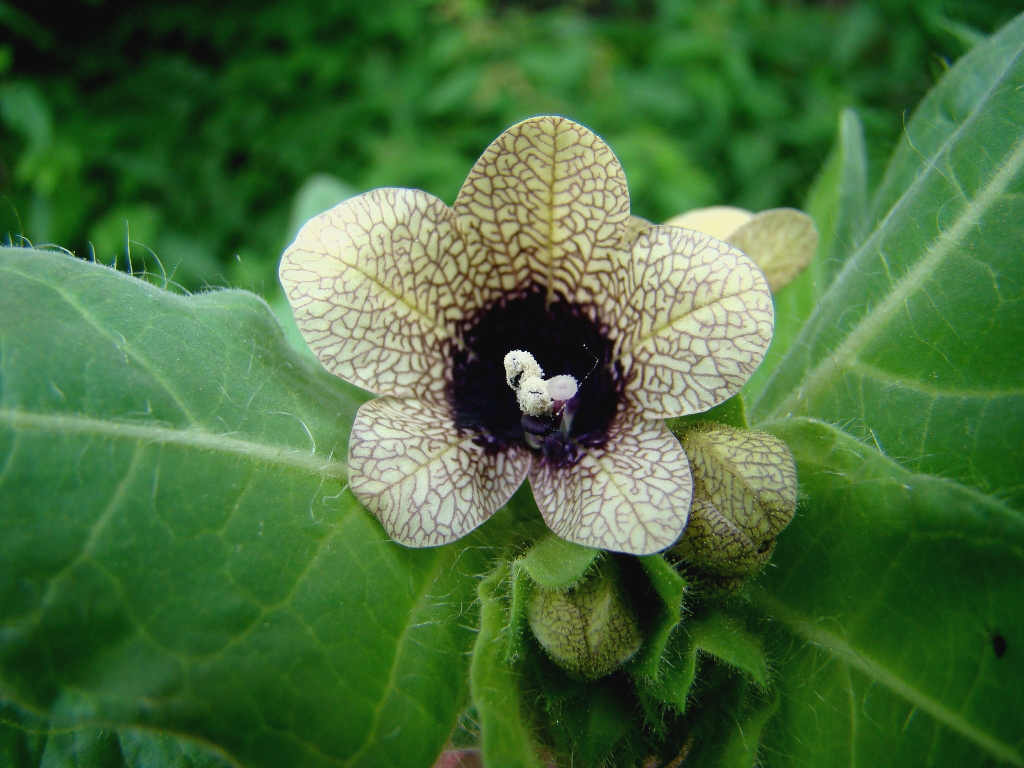
Henbane (Khursani ajwain)
Henbane, known locally as Khursani Ajwain, is a medicinal herb that is native to the Himalayan and temperate regions. It is commonly found in mountainous areas of Asia, including regions like Himachal Pradesh and the Great Himalayan National Park (GHNP). This herb has a long-standing history of use in both traditional medicine and cultural practices due to its distinct properties and potent effects.
Natural Habitat and Occurrence in GHNP
Henbane thrives in dry, rocky soils at high altitudes ranging from 1,500 to 3,000 meters in the Himalayan foothills. It is particularly prevalent in the temperate forests and meadows of the GHNP, where it grows naturally among other hardy alpine plants. It is often found in disturbed soils, making it a resilient species that can withstand the extreme weather conditions of the mountainous terrain.
Botanical Description
Henbane (Khursani Ajwain) is a short-lived annual or biennial plant that features spiky, dark green leaves and small, tubular flowers that bloom in yellow to purple hues. The leaves are broad and hairy, contributing to the plant’s distinctive appearance. Henbane produces seed capsules containing dark seeds, which are spread by both wind and animals. The plant reaches heights of around 1-2 feet and has a strong, pungent aroma that is recognizable even from a distance.
Medicinal Uses
Henbane has been used for centuries in traditional medicine to treat a variety of ailments. The plant contains alkaloids such as scopolamine and hyoscyamine, which give it antispasmodic and sedative properties. It has been traditionally used to:
-
Relieve pain and inflammation
-
Treat respiratory issues like coughs and asthma
-
Alleviate digestive problems like indigestion and cramps
-
Assist in promoting relaxation and reducing anxiety
However, due to the potency of the alkaloids, Henbane should be used with caution and under professional supervision to avoid potential toxicity.
Cultural Significance
In the Himalayan region, Khursani Ajwain is not only valued for its medicinal uses but also for its symbolic importance in local culture. The herb is often associated with spiritual practices, and its presence in local gardens is believed to offer protection against evil spirits and misfortune. In traditional Ayurvedic practices, it is considered to have cooling properties, making it useful in balancing the body’s internal heat.
Common name: Khursani ajwain
Botanical name: Hyoscyamus niger Family: Solanaceae (Potato family)
Conservation Status
While Henbane is not considered endangered, the natural populations in the Great Himalayan National Park face threats from over-harvesting and habitat degradation. Conservation efforts in the park are essential to ensure that this plant remains protected in its native environment. With proper habitat management and sustainable harvesting practices, Henbane can continue to thrive in the GHNP for generations to come.
Conclusion
Henbane (Khursani Ajwain) is an important medicinal herb that contributes to the rich biodiversity of the Great Himalayan National Park. With its distinct appearance and historical significance in traditional medicine, it serves as a reminder of the deep connection between the Himalayan flora and the cultural practices of the region. The preservation of its habitat is critical to maintaining this plant’s place in the ecosystem and its benefits to the local communities and wildlife



